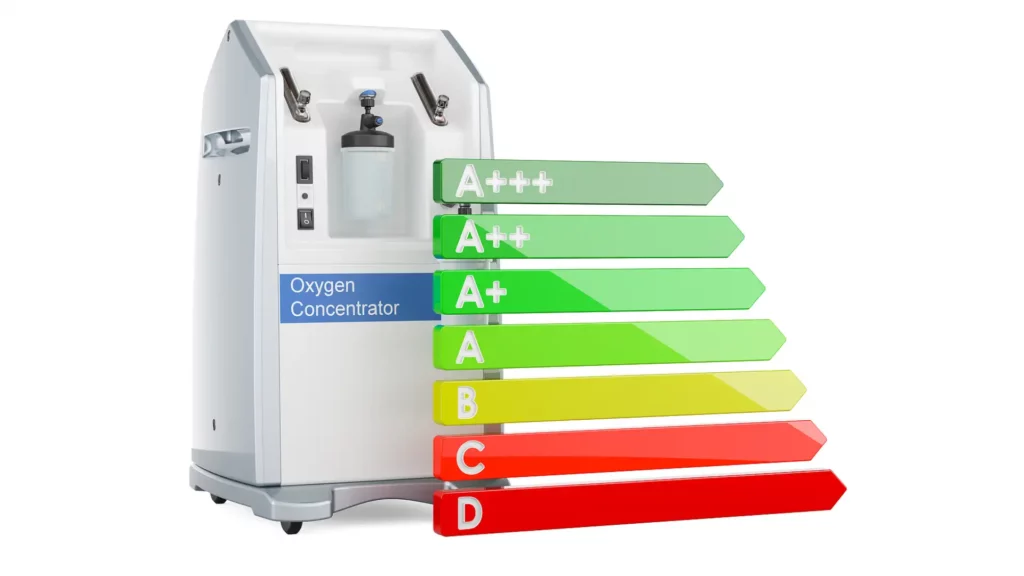Living with a loved one who depends on an oxygen concentrator for their well-being has led me to ponder a crucial question: How much electricity does an oxygen concentrator use? It's not just curiosity; it's a practical concern that many families, including mine, face daily.
In this comprehensive guide, we will explore the intricate world of oxygen concentrators and provide you with a detailed answer to the question that has been on our minds.
What is an Oxygen Concentrator?
An oxygen concentrator is a medical device designed to provide a continuous supply of oxygen to individuals with respiratory conditions. It works by taking in ambient air, filtering out nitrogen, and delivering concentrated oxygen to the patient through a nasal cannula or mask.
These devices are vital for individuals with conditions like chronic obstructive pulmonary disease (COPD) and are often used in both home and clinical settings.
Analyzing the Electricity Usage of Oxygen Concentrators
When it comes to understanding how much electricity does an oxygen concentrator use, it's essential to dive into the specifics to provide accurate information.
Oxygen concentrators are a lifeline for many, but their impact on electricity consumption is a frequent concern.
- Estimating the Electricity Usage of Different Oxygen Concentrator Models
It's crucial to acknowledge that not all oxygen concentrators are built alike. Therefore, the question of how much electricity does an oxygen concentrator use can vary significantly depending on the model.
Model efficiency is vital in determining an oxygen concentrator electricity usage. Users can refer to the manufacturer's specifications for precise power consumption details.
- Daily and Monthly Electricity Consumption
To get a clearer picture of how much electricity does an oxygen concentrator use daily and monthly, one must consider the average operating hours.
By multiplying the daily usage in kilowatt-hours (kWh) by the number of days in a month, users can estimate the monthly electricity consumption of their oxygen concentrator.
- Impact of Oxygen Flow Rate on Electricity Usage
The flow rate, which indicates the amount of oxygen delivered per minute, also affects how much electricity does an oxygen concentrator uses.
Higher flow rates typically mean increased electricity usage. Users should be aware of this, especially if they have adjustable flow settings on their devices.
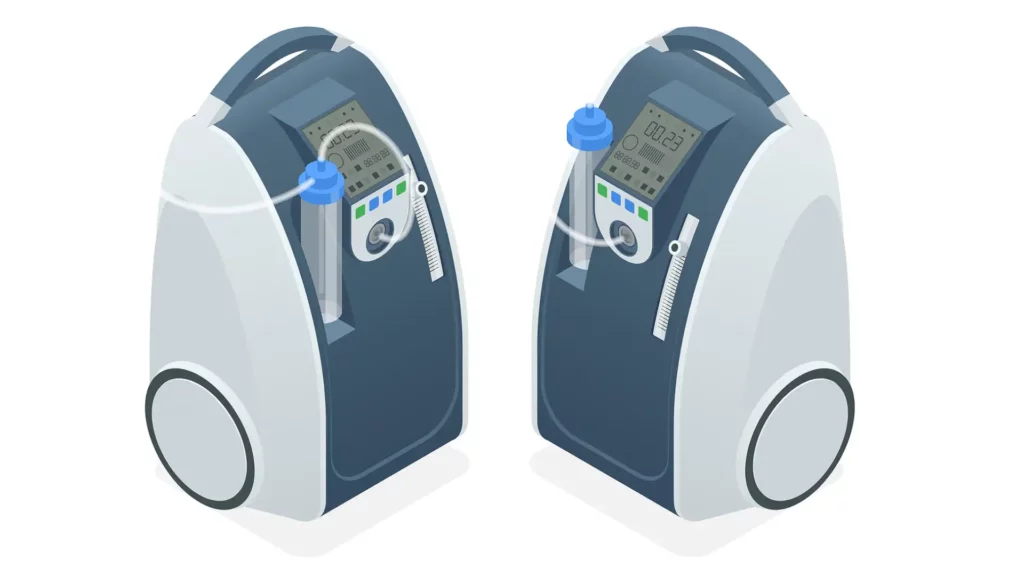
Types of Oxygen Concentrators: How Much Electricity Does an Oxygen Concentrator Use
Oxygen concentrators come in various types, each with its unique characteristics and electricity usage patterns. Let's explore the two primary types: continuous flow and pulse dose concentrators.
- Continuous Flow Oxygen Concentrators: These concentrators deliver a constant flow of oxygen measured in liters per minute (LPM). They are suitable for patients who require a steady oxygen supply, even during inhalation and exhalation.
- Electricity Consumption: Continuous flow concentrators consume electricity consistently. Power consumption varies based on flow rate and power settings, with higher settings resulting in increased electricity usage.
- Pulse Dose Oxygen Concentrators: These concentrators deliver oxygen in short, precisely timed bursts during inhalation. They are known for conserving oxygen and can be more energy-efficient.
- Electricity Consumption: Pulse dose concentrators consume less electricity compared to continuous flow devices. However, their power usage still varies based on settings.
- Continuous vs. Pulse Dose Portable Concentrators: Portable oxygen concentrators are available in both continuous and pulse dose variations, offering mobility for patients on oxygen therapy.
- Electricity Consumption: Portable oxygen concentrators are designed to be energy-efficient, often with rechargeable batteries for mobility.
- Stationary vs. Portable Concentrators: Stationary concentrators are for home or clinical use, while portable concentrators are designed for mobility.
- Electricity Consumption: Stationary concentrators plug into standard outlets and have power consumption influenced by settings. Portable concentrators are energy-efficient when running on battery power.
- High-Flow Oxygen Concentrators: These concentrators are designed for patients requiring higher flow rates of oxygen.
- Electricity Consumption: High-flow concentrators have a higher power requirement due to their ability to deliver larger oxygen volumes, especially at higher flow rates.
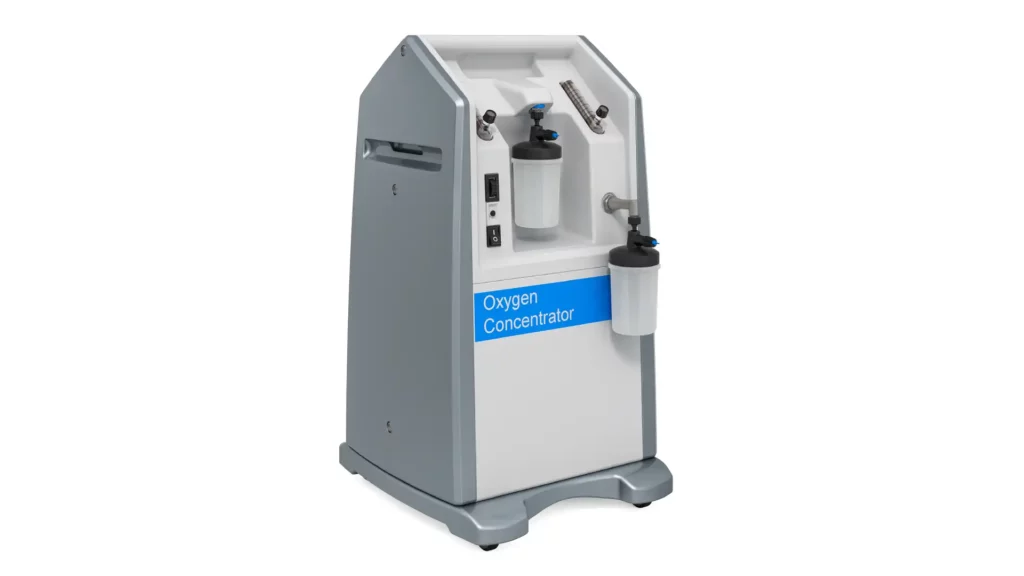
Factors Affecting Electricity Consumption
Now, let's delve deeper into the factors that can significantly impact the electricity consumption of oxygen concentrators:
- Flow Rate and Its Impact: The concentrator's flow rate impacts power usage. Higher rates require more electricity for oxygen delivery. Balancing efficiency is important.
- Power Settings Matter: Some oxygen concentrators have adjustable power settings to save electricity without affecting the patient's health.
- Usage Duration and Its Implications: Hours of daily use impact electricity consumption and longer usage means higher bills. Efficient management of usage time can save significant energy.
- Model and Brand Variations: Different concentrator models and brands vary in energy efficiency. Newer models are designed to be more energy-efficient, reducing overall electricity usage.
Choosing the right model can significantly lower long-term energy costs.
How Much Electricity Does an Oxygen Concentrator Use Tips for Energy Efficiency
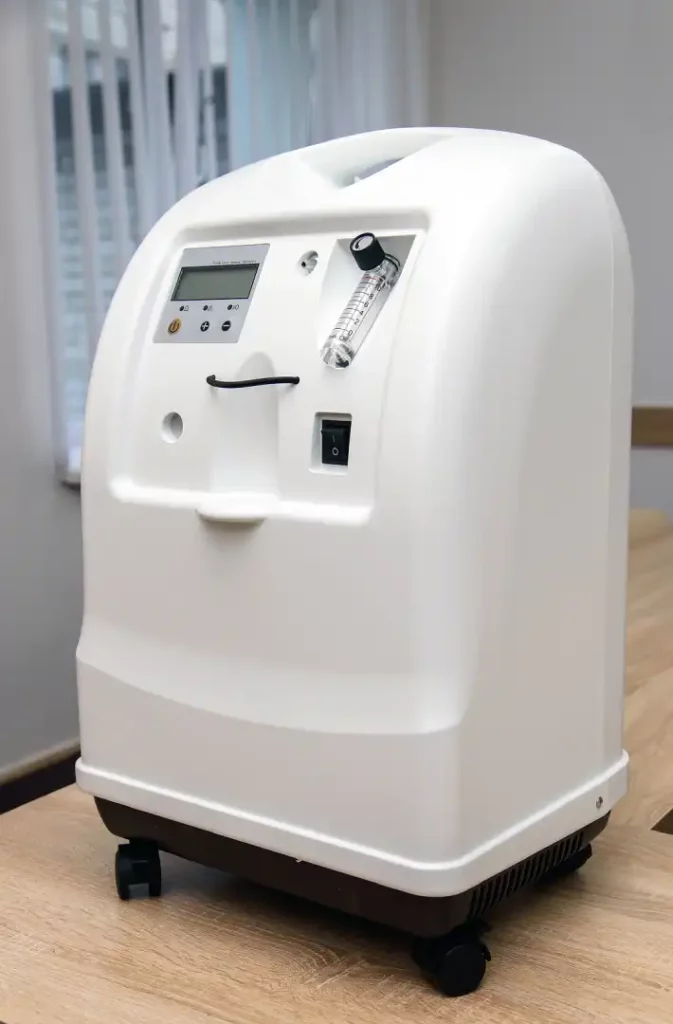
For those concerned about the electricity usage of their oxygen concentrators, here are some extensive tips to help you maximize energy efficiency:
- Optimize the Flow Rate
Select the lowest effective flow rate that meets the patient's oxygen needs. This can significantly reduce electricity consumption.
- Power Down When Not in Use
Make it a practice to turn off the concentrator when it's not in use. This simple step can prevent unnecessary energy wastage.
- Regular Maintenance Matters
Proper maintenance of the concentrator is essential to ensure optimal efficiency. Regularly clean and service the device to keep it running smoothly.
- Consider Energy-Efficient Models
If you're in the market for a new oxygen concentrator, consider investing in a model explicitly designed for energy efficiency. These newer models are engineered to reduce both electricity consumption and operating costs.
Understanding the Electricity Usage of a 5 Liter Oxygen Concentrator
When we talk about the question, How much electricity does a 5 liter oxygen concentrator use? it's important to delve into the specifics of this particular size.
A 5 liter oxygen concentrator delivers 5 liters of oxygen per minute, making it suitable for home use due to its balance of oxygen delivery and energy efficiency.
Estimating the Power Consumption
The key query for many users is, How much electricity does a 5 liter oxygen concentrator use Typically, a 5 liter oxygen concentrator will use around 350-500 watts of power.
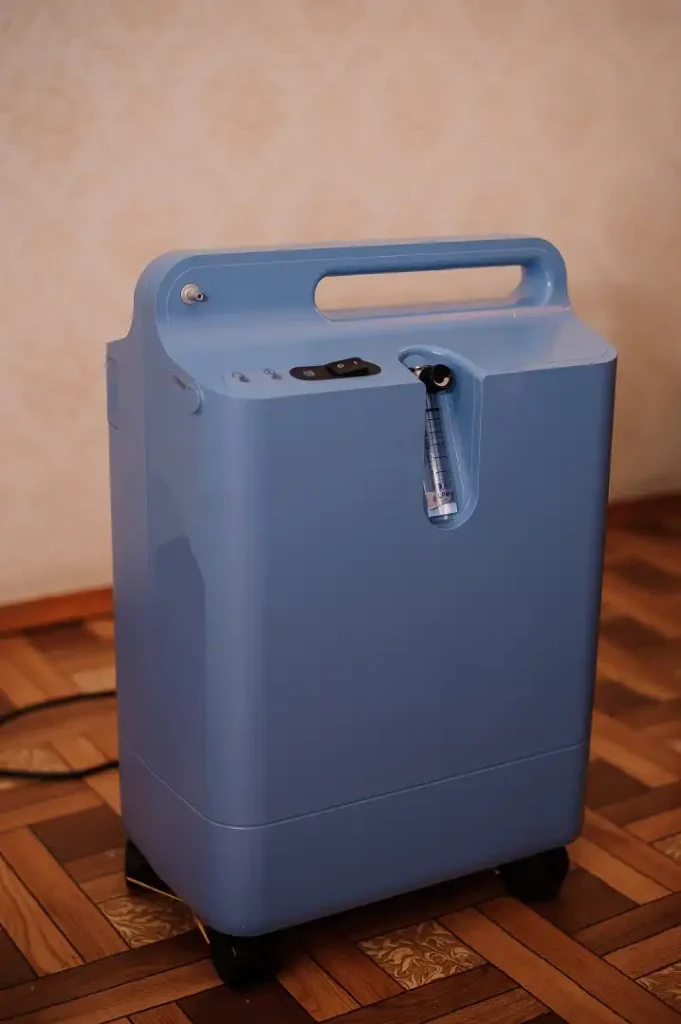
The Environmental Impact of Oxygen Concentrators
Oxygen concentrators save lives but have environmental impact. Let's discuss their environmental aspects in numbered lists.
Positive Environmental Aspects
- Reduced Carbon Emissions
- Oxygen concentrators are more environmentally friendly compared to traditional oxygen cylinders. They eliminate the need for oxygen transportation and reduce the associated carbon emissions.
- Energy Efficiency
- Many modern oxygen concentrators are designed to be energy-efficient, helping to minimize electricity consumption during operation.
- Longevity and Durability
- Oxygen concentrators are built to last and can serve patients for several years. Their durability reduces the need for frequent replacements, saving resources.
Environmental Challenges and Considerations
- Electricity Usage
- While oxygen concentrators are more energy-efficient than some alternatives, they still consume electricity. Managing their electricity usage is crucial to minimize their environmental impact.
- Electronic Waste (E-Waste)
- Oxygen concentrators contain electronic components and batteries, contributing to electronic waste when they reach the end of their lifespan. Proper recycling and disposal of e-waste are essential.
- Resource Extraction
- The production of oxygen concentrators involves resource extraction and manufacturing processes that consume materials and energy. Efforts to reduce the environmental footprint during production are ongoing.
Ways to Reduce the Environmental Impact
- Energy-Efficient Models
- Consider choosing oxygen concentrator models explicitly designed for energy efficiency. These models reduce electricity consumption, benefiting both the environment and your energy bills.
- Proper Disposal
- When it's time to retire an oxygen concentrator, ensure it is disposed of properly. Look for recycling or electronic waste disposal programs in your area.
- Reuse and Donate
- If your concentrator is still functional but no longer needed, consider donating it to organizations or individuals who can benefit from it. Reusing devices extends their lifespan and reduces waste.
- Energy Sources
- Power your oxygen concentrator with electricity from renewable sources if possible. This choice can further reduce the carbon footprint associated with its operation.
- Regular Maintenance
- Keep your oxygen concentrator well-maintained to ensure it operates efficiently throughout its lifespan. Proper maintenance can extend its usability and reduce the need for premature replacements.
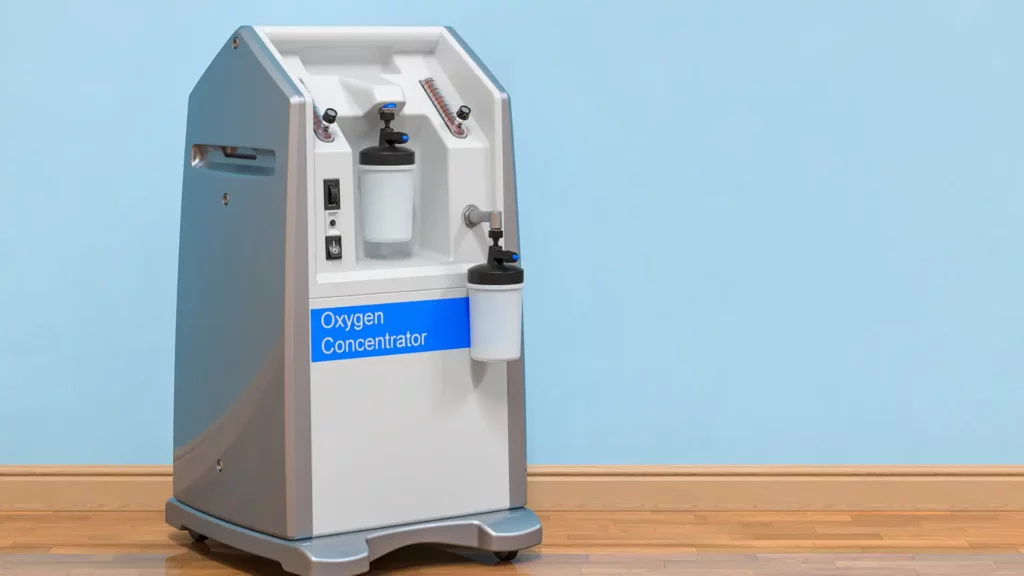
FAQs About Oxygen Concentrator Electricity Usage
Can I Use a Portable Oxygen Concentrator to Save Electricity?
Answer: Yes, using a portable oxygen concentrator can save electricity. Portable concentrators typically have lower power requirements compared to stationary models. However, it's important to balance the electricity savings with the device's capacity and your specific oxygen needs.
What Is the Average Power Consumption of a Home Oxygen Concentrator?
Answer: The average power consumption of a home oxygen concentrator is usually between 350 and 600 watts. However, this can vary based on the model and the settings used. It's important to check the specifications of your particular model to understand its power consumption.
How Much Electricity Does a Oxygen Concentrator Use?
Answer: The amount of electricity an oxygen concentrator uses varies based on its model and size. Typically, an oxygen concentrator uses about 350-600 watts of electricity. To understand how much electricity does a oxygen concentrator use in your specific case, it's important to consider the device's wattage and your usage pattern.
How Much Electricity Does an Oxygen Concentrator Use Per Hour?
Answer: To determine how much electricity does an oxygen concentrator use per hour, you need to look at the device's power rating. If an oxygen concentrator has a power rating of 500 watts, it uses 500 watt-hours of electricity per hour. This means for every hour it operates, it consumes 0.5 kilowatt-hours (kWh) of electricity.
How Much Electricity Does an Oxygen Machine Use?
Answer: When asking how much electricity does an oxygen machine use, it's important to note that oxygen machines, or oxygen concentrators, typically use between 350 and 600 watts of electricity. This usage can translate to a significant amount over continuous operation, so it's crucial to consider this in the context of your electricity billing structure.
How Much Electricity Does Oxygen Concentrator Use?
Answer: The question of how much electricity does oxygen concentrator use is often asked by users mindful of their energy consumption. Generally, an oxygen concentrator uses around 350-600 watts of electricity. However, the exact amount can vary based on the specific model and usage habits. To get a precise figure, check the wattage on your device and calculate it based on your daily usage hours.
How Does the Flow Rate Affect the Electricity Usage of an Oxygen Concentrator?
Answer: The flow rate significantly affects how much electricity an oxygen concentrator uses. Higher flow rates typically require more power, leading to increased electricity consumption. Adjusting the flow rate to the minimum required can help reduce power usage.
Are There Energy-Efficient Oxygen Concentrators Available?
Answer: Yes, there are energy-efficient oxygen concentrators available in the market. These models are designed to provide oxygen therapy while consuming less electricity. When purchasing an oxygen concentrator, look for energy efficiency ratings or ask the supplier about the model's power consumption.
How Can I Calculate the Monthly Electricity Cost of Running an Oxygen Concentrator?
Answer: To calculate the monthly electricity cost of running an oxygen concentrator, multiply the device's wattage by the number of hours used per day, convert this to kilowatt-hours (kWh), and then multiply by your electricity rate. Finally, multiply this daily cost by the number of days in a month.
Do Oxygen Concentrators Use More Electricity Than Other Medical Devices?
Answer: Oxygen concentrators can use more electricity than some other medical devices, but this varies widely depending on the type of device and its power requirements. Oxygen concentrators are generally more power-intensive than smaller devices like CPAP machines but may use less power than larger medical equipment.
How Much Electricity Does an Oxygen Concentrator Use: Conclusion
In conclusion, the electricity consumption of an oxygen concentrator is a multifaceted topic influenced by various factors. By gaining a deeper understanding of these factors and following energy-efficient practices, you can effectively manage and reduce the electricity usage of this vital medical device.
As someone who values the health and well-being of their loved ones, it's reassuring to know that there are ways to balance these priorities effectively. For precise information on your specific concentrator's electricity consumption, always refer to the user manual provided by the manufacturer.

